well, not quite . . .
fought
14 February 2013
by Andrew Lam
A battle fought between Alexanderian Imperial (Perdiccas)
and Early Japanese with Korean Allies
After defeating the Ch'in Empire of China, Alexander the
Great ordered his Regent, Perdiccas, to bring the Koreans and Japanese to
their knees.
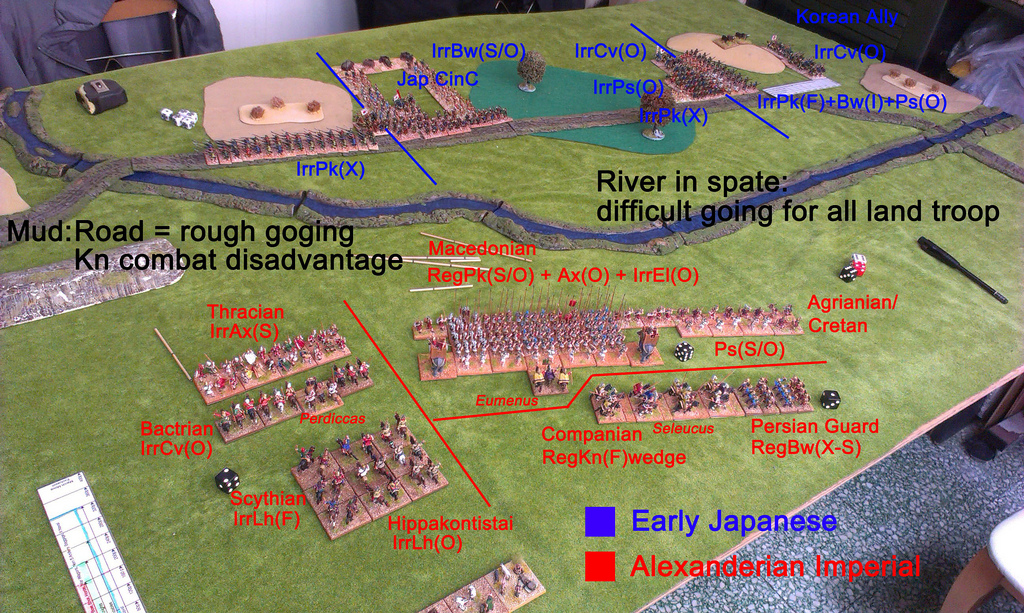
Initial deployment - rain and mud made it a bad
day for conducting a battle
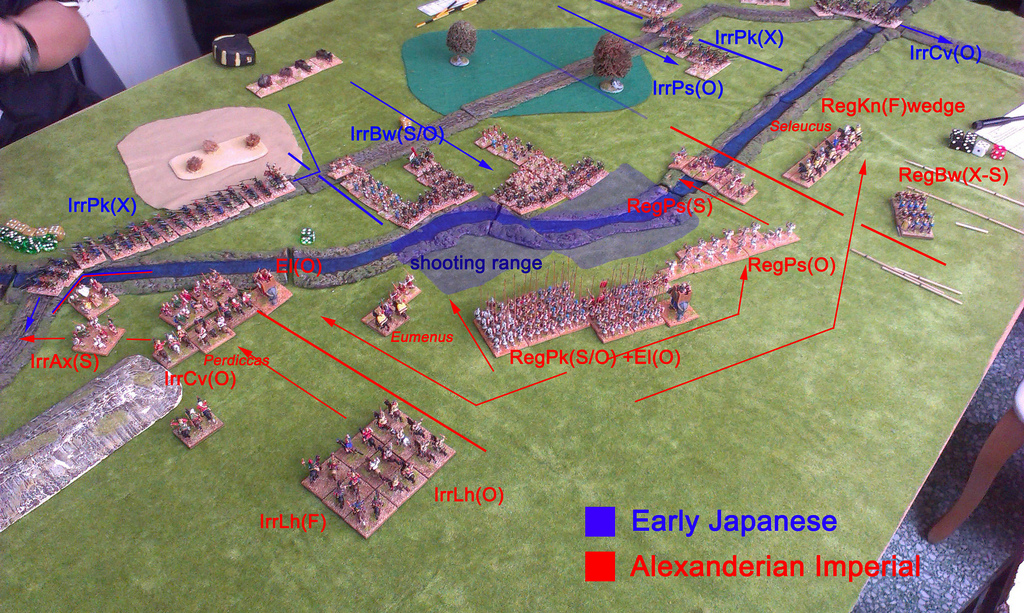
The Japanese stretched both their flanks towards the two
bridges, it was a clear sign of double envelopment. The Japanese centre
rushed tiowards the turbulent river, and found it difficult to wade across.
Perdiccas ordered the Thracians to seize the crossing on the left flank,
with the support of Asiatic horsemen and Elephants. Fearing the
Japanese storm of arrows, he held his phalanx at least 200 paces away from
the river bank. Meanwhile on the right flank, the Agrianians attempted to
infiltrate between the 2 Japanese commands, with Seleucus's companian
cavalry and Persian guard covering their rear.
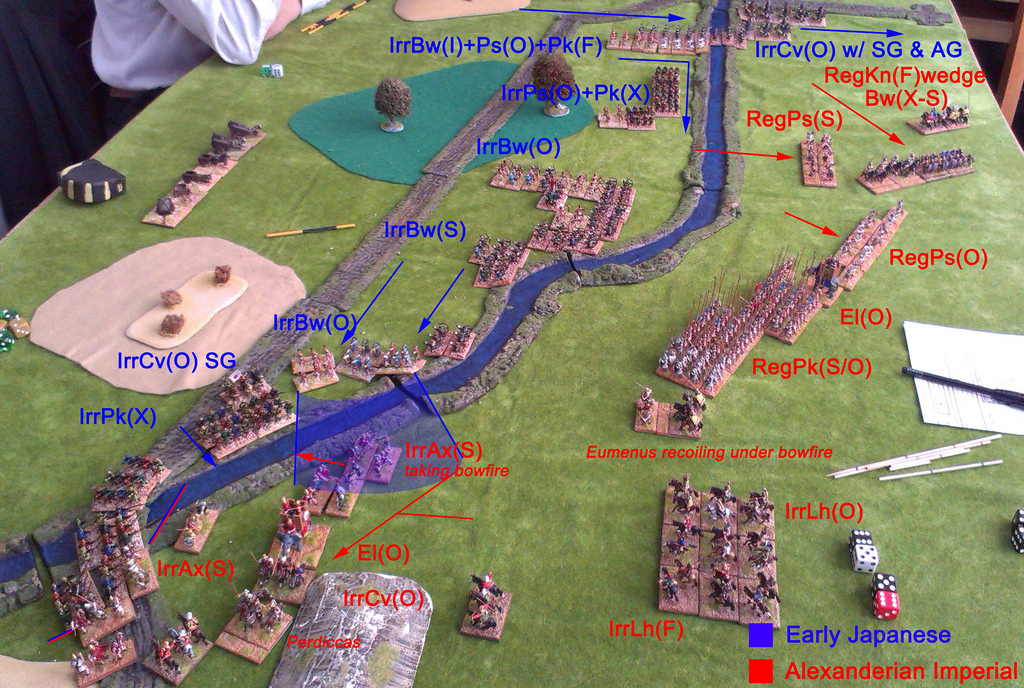
Both sides strove to take control of the bridge. With
lighter equipment and better ground conditions, the Thracians were able to
intercept the Japanese infantry column. Fierce hand-to-hand combat
broke out in the Japanese bridgehead: Japanese pikemen repelled the
Thracian frontal charges with their large pavises. However, with an
unprotected flank, their formation soon collapsed under constant pressure.
Meanwhile on the other flank of the battlefield, the
Japanese drove back the Agrianians. Half of the Japanese left flank,
led by Japanese and Korean cavalry, had successfully crossed the river.
Seleucus now realized he was heavily outnumbered. He immediately
pulled back and sought refuge from the centre phalanx.
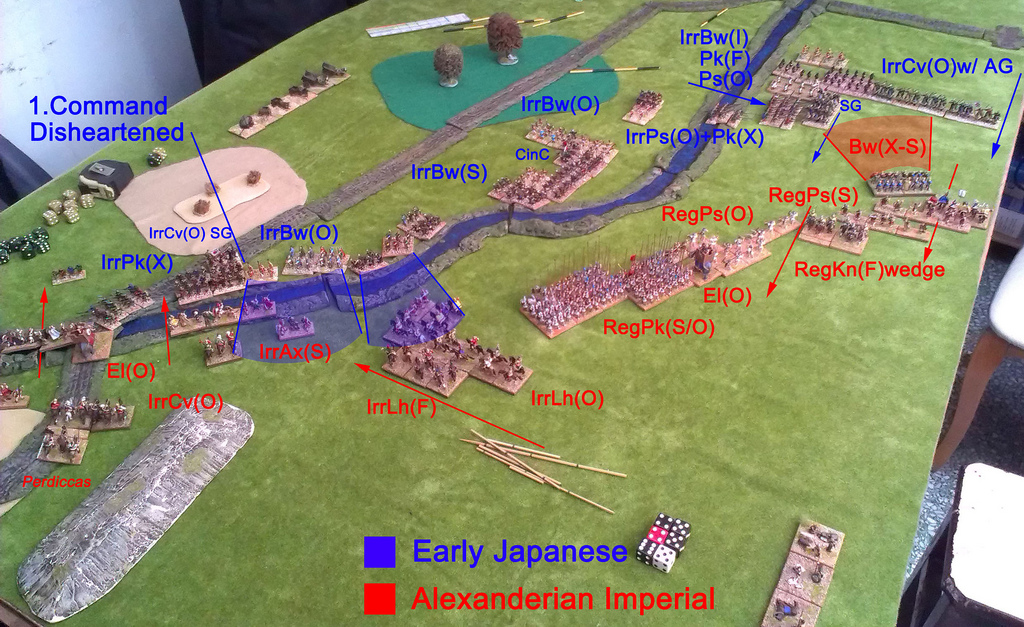
On the left, the war-like Thracians slaughtered the
disordered Japanese infantry with complete brutality. Perdiccas ordered them
to wade across the river, covering the Elephants, which continued the
frontal charge through the bridge. The Japanese CinC sent forward a
bow detachment, that tried to resolve the situation with their interlocking
bowfire.
On the other hand, most of the combined
Japanese-Korean forces had crossed the river and lined-up in good order.
Seleucus left the Persian bowmen to cover the full retreat of the entire
flank.
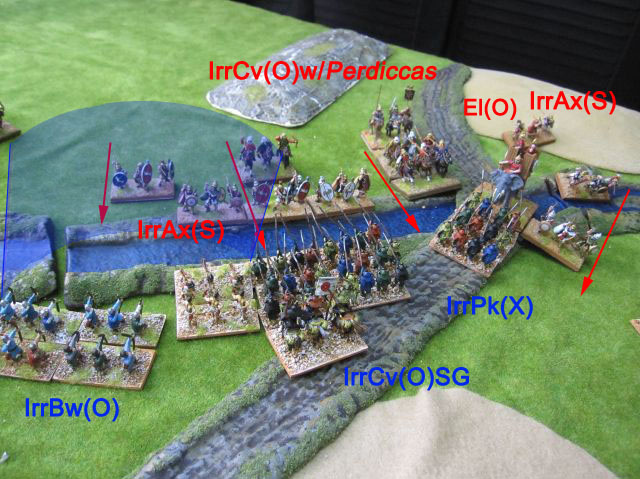
Although the Japanese pikemen were disheartened, they
were able to repel and finally destroy the Macedonian Elephants. They
had also repelled the lightly-armed Thracian waders, with the aid of
interlocking bowfire. Both sides suffered heavy casualties. The
white-hot fighting over the bridge turned into a stalemate.
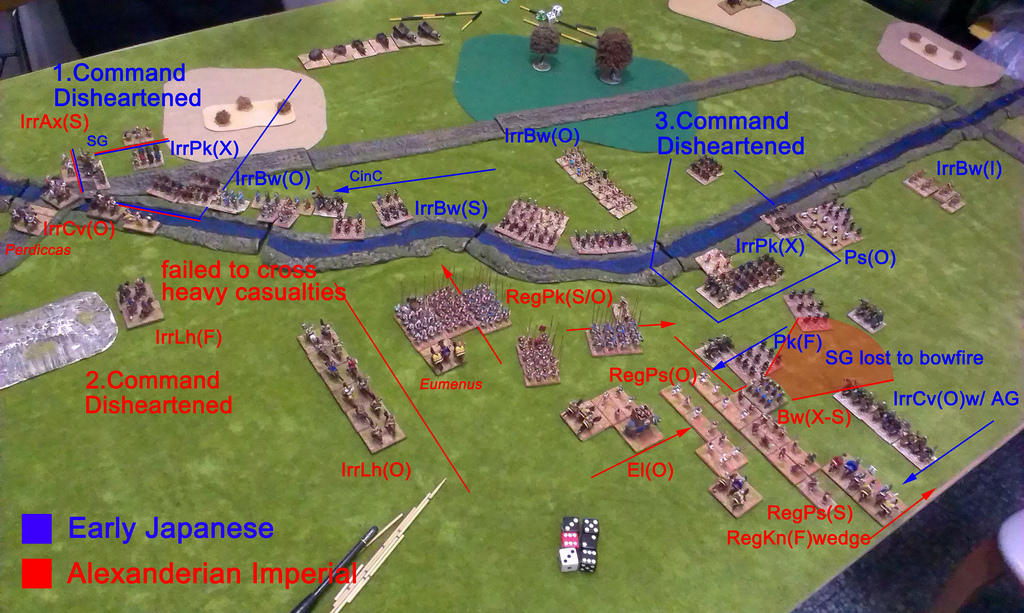
Perdiccas advanced his centre to prevent the Japanese
crossing en masse. While Seleucus had just rallied the line with
reinforcements, a sudden incident changed the course of the battle: under
Persian bowfire, many Japanese-Korean cavalrymen fell from their horses,
including a Japanese Lord, who was commanding the Japanese left flank.
This struck the morale of the Japanese and disheartened them.
Realising the upcoming fight would not be an easy
one, the Japanese CinC called off the offensive. Out of pure luck, the
Macedonian right flank was saved from utter destruction. Regent
Perdiccas kept his entire army in camp and besought his King for
reinforcement.